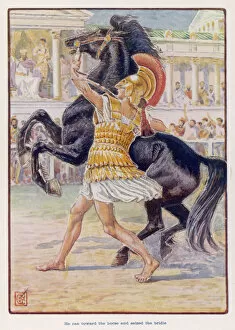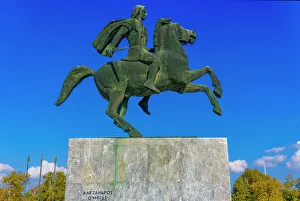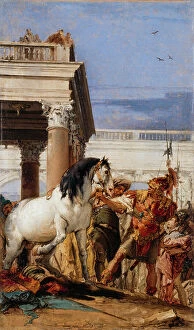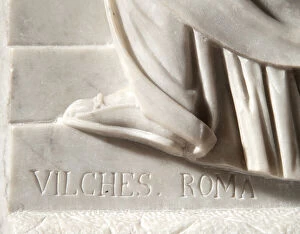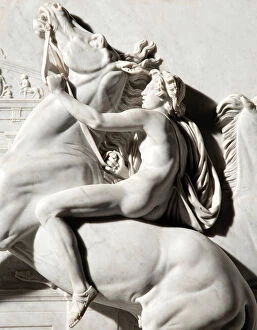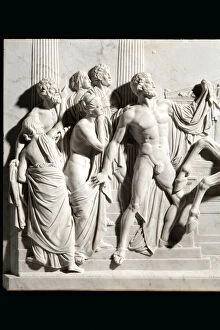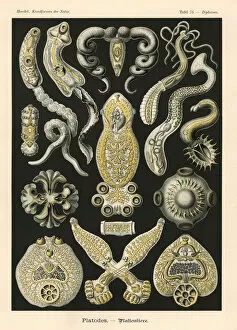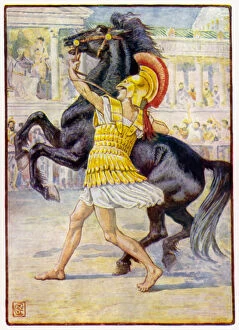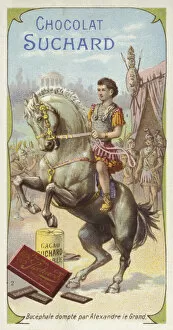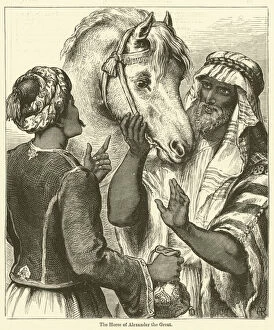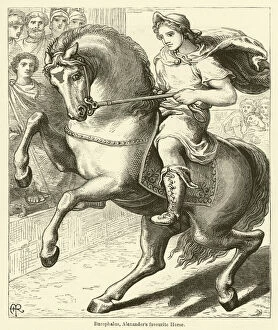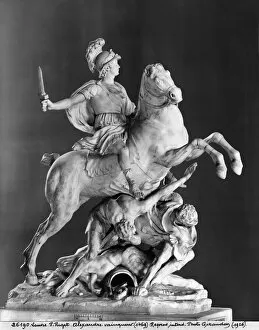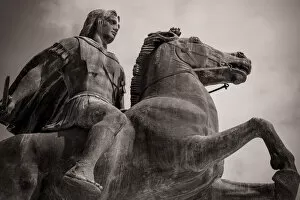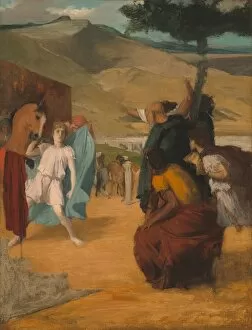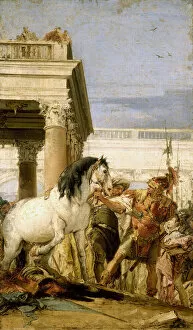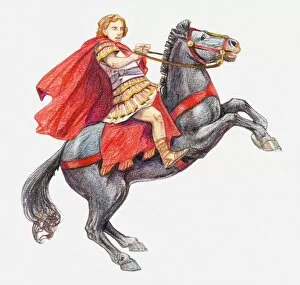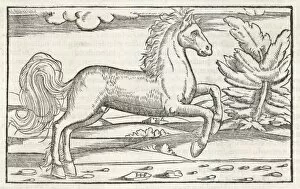Bucephalus Collection
"Bucephalus: The Legendary Steed of Alexander the Great" In the annals of history
All Professionally Made to Order for Quick Shipping
"Bucephalus: The Legendary Steed of Alexander the Great" In the annals of history, few partnerships have been as iconic and enduring as that between Alexander the Great and his faithful steed, Bucephalus. This magnificent horse played a pivotal role in countless battles and conquests, forever etching its name into the tapestry of ancient Greece. The statue of Alexander atop Bucephalus at Thessaloniki's city waterfront stands as a testament to their legendary bond. As if frozen in time, it captures the awe-inspiring sight of this conqueror astride his trusted companion, ready to face any challenge that lay ahead. Leon Davent's masterpiece from ca. 1540-45 depicts an intimate moment between man and beast. With gentle hands and unwavering determination, Alexander masters Bucephalus with grace and finesse – a true display of their mutual respect. A monumental relief carved from marble during c. 1850-59 showcases another instance where Alexander tames his loyal mount. The intricate details bring this scene to life, showcasing both strength and vulnerability in equal measure. Not limited to art alone, frescoes like "Alexander the Great taming Bucephalus" (1519) further immortalize their extraordinary partnership. Vibrant colors breathe life into this historic event, capturing the essence of their unbreakable connection for generations to come. Beyond warfare and conquests on horseback lies another side to these legends – hunting expeditions galloping through vast landscapes. A color lithograph portrays Alexander on horseback during one such adventure; a fearless leader embracing nature's challenges alongside his beloved equine companion. Chromolithographs depicting Alexander himself pay homage not only to his military prowess but also serve as a reminder that behind every great conqueror is an equally remarkable steed by their side – none more so than Bucephalus.

